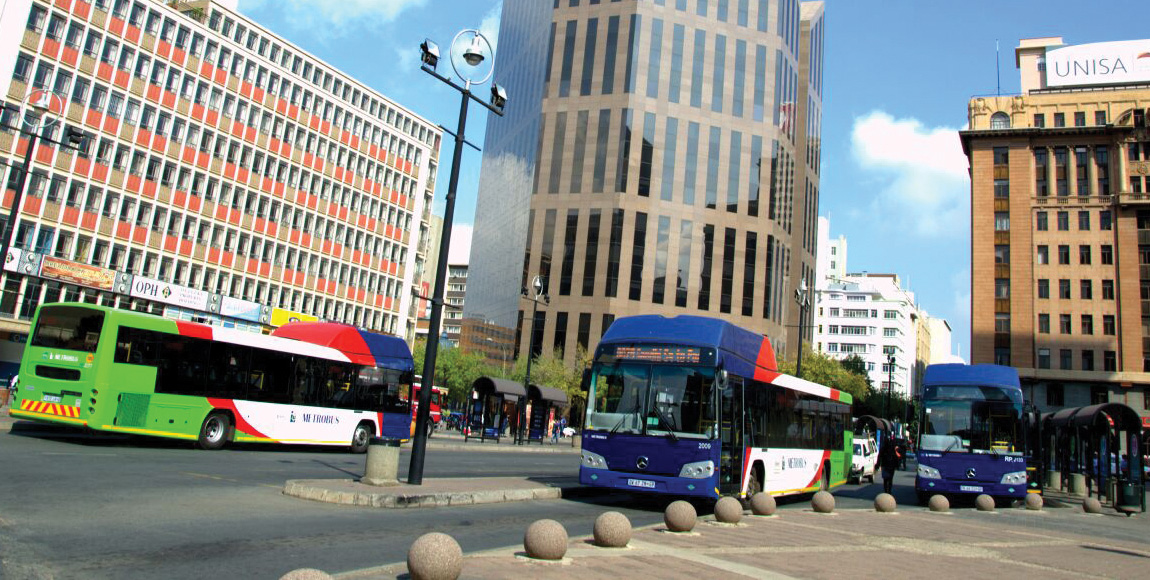Let’s repeat the Mynah magic!

It seems our politicians will be using public transport in future. This is, however, not as simple as it sounds
The Treasury has started cracking the whip among South Africa’s 257 municipalities, calling on mayors and senior municipal officials to start tightening up on wasteful expenditure. When it comes to transport, that means using “the municipal fleet” and “public shuttles” instead of expensive cars. Will these rules also be pushed upwards to include provincial officials as well as the blue-light crowd?
I liked the response on Twitter that the most appropriate form of transport for many municipal officials is in the back of a police van!
The government will need to give stronger leadership on this issue. Even in the few cities that have their own bus fleets, senior officials have little idea about the services they are supposed to be “managing”.
Take Johannesburg Municipality’s Metrobus service as an example. It uses a fleet of hybrid cars (I suppose that makes it OK) to take senior people to town and back. The head office of Metrobus is about a kilometre west of the Civic Centre, and there is a bus stop right outside the building, served by routes 66, 67, 412 and 413. Why can’t they go by bus? Answer: these four routes operate so infrequently that one could sit for an hour before a bus arrives.
If that’s the way it is in South Africa’s number one municipality, what can we expect of the other 256?
Previous columns have stressed the need for simple, low-cost solutions to the country’s public-transport problems. So let’s have a quiz. What has been the most important development in bus transport in South Africa since 1960? (That’s when Pretoria bought South Africa’s last trolleybuses and Durban electrified the Musgrave Road route).
Is it bus rapid transit (BRT)? Is it the Go!George scheme?
In my opinion it’s neither. Top spot goes to the Durban Mynah service, introduced in November 1987. At that stage, white passenger levels in Durban had been falling steadily since the early 1960s – from 40 million in 1961 to 24 million in 1971, ten million in 1981 and eight million in 1987, when they stopped keeping separate records for white commuters.
The Mynah service used 70-odd midibuses of 21-seat capacity, operating on better schedules than before, mainly on the previous trolleybus routes in Durban. Accompanied by an excellent publicity campaign, it turned things around – by 1990, passenger levels (mainly white) had risen to over 11 million.
That’s impressive, especially in view of the “white” issue, because large numbers of whites need to get back on to public transport in South Africa. That’s an essential part of the radical economic change that we keep reading about.
Sadly, by around 1995 the Mynah service started to fall apart again, entirely due to incompetence and mismanagement, and it has never recovered.
Nevertheless, I am confident that this kind of turnaround can be achieved again in South Africa today, despite over 30 years of stagnation in the bus industry.
The introduction of BRT in South African cities has achieved nothing that a reorganised basic bus service could not have achieved. Unlike the Mynah concept, we do not even need new buses in the initial stages.
Finally, talking of publicity campaigns brings me to the topic of timetables and the way they are presented to the public. Last month’s column described the poor rail service on Saturdays at Germiston station – supposedly the busiest passenger railway junction in South Africa.
When I went into the Metrorail website later that day to check on the trains that were supposed to be running, I found that the entire Saturday timetable for Gauteng (consisting of at least 15 pages of spreadsheets) was “unavailable”. A full month later, all the pages were still missing!
It is clear that transport managers don’t care much about informing the public of the services on offer, and when they do the information is badly presented.
With the exception of the Gautrain and one or two of the BRT operators, the websites of most bus operators in South Africa (where they exist) are close to useless. Perhaps we will discuss them in another column!
Published by
Vaughan Mostert
focusmagsa




